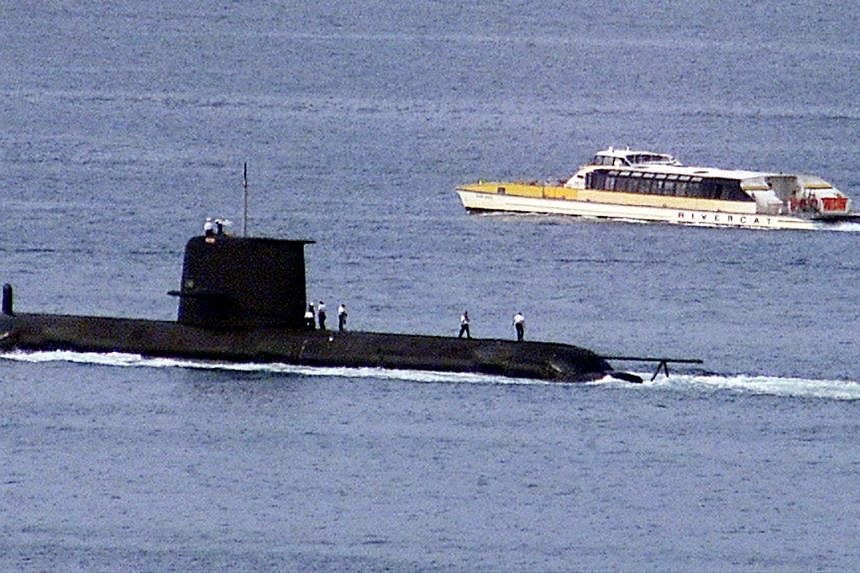JAKARTA (THE JAKARTA POST/ASIA NEWS NETWORK) - Since its inception in 2021, the enhanced trilateral security partnership among Australia, the United Kingdom and the United States (Aukus) has led to international controversy.
The main concern over such a strategic partnership is about the provision of nuclear-powered submarine capability to Australia. On Sept 23, the US, the UK and Australia released a joint leaders' statement to mark one year of Aukus. The statement reiterated the commitment of Australia that it does not seek and will not acquire nuclear weapons. It also reasserted that the US and the UK are fully committed to establishing an approach to sharing nuclear naval propulsion (NNP) technology with Australia that meets the highest non-proliferation standard.
Yet, the looming challenge is how to gain the confidence of the international community that Aukus will work transparently with the International Atomic Energy Agency (IAEA) toward such an approach. It should be an effective mechanism that will keep the nuclear non-proliferation regime uncompromised.
Within this context, Indonesia successfully mainstreamed the discussion of NNP in the 10th Review Conference of the Nuclear Non-Proliferation Treaty (NPT) taking place in New York on Aug 1-26. Through a submission of an eloquent working paper, Indonesia highlighted its concerns over the use and sharing of nuclear material and technology for military purposes as it would present a unique case that deserves serious attention.
The Indonesian paper is essentially about NNP in general. It neither specifically names a certain program nor refers to specific countries. The paper clearly underscored "any" cooperation involving the transfer of nuclear material and technology for military purposes from nuclear-weapon states to any non-nuclear-weapon states (NNWS) as increasing the associated risks of proliferation.
The paper is not intended to single out Aukus or to spotlight its compliance with the spirit of non-proliferation objectives. It just points out that the access to such nuclear-powered submarine capability will certainly set a dangerous precedent for other NNWS to follow.
It also reveals a potential legal loophole within the NPT regime. Such a gap would be apparent in the juxtaposition between the NPT's prohibition on NNWS from acquiring nuclear weapons and the prohibition on transferring fissionable material to a NNWS without being subject to IAEA safeguards. The approach taken by Aukus will test the limits of an already fragile non-proliferation regime.
Despite the fact that the NPT does contain an explicit prohibition on NNWS acquiring nuclear weapons, nothing therein prohibits the use of nuclear material for military purposes. It is silent on the use of nuclear energy by NNWS for military purposes. This legal gray area was not unintentional. During the negotiation of the NPT, some NNWS intentionally kept the option of acquiring nuclear-powered submarines open. This silent acquiescence on NNWS access to NNP therefore has significant ramifications for non-proliferation efforts.
The comprehensive safeguard agreements between the IAEA and NNWS make this apparent gap in the NPT explicit. Pursuant to Article 14 of Australia's Comprehensive Safeguard Agreement, a NNWS may declare the non-application of IAEA safeguards to nuclear material to be used in activities related to development of NNP as a non-proscribed military nuclear activity. It also means nuclear material used for a NNP program may be exempted from the IAEA verification regime.
The key problem here is the lack of legal definition or interpretation of "non-proscribed nuclear activity". Therefore, any unilateral attempt by a NNWS to invoke such an exemption from mandatory IAEA safeguards will raise the issue of international confidence unless it is taken through appropriate and transparent consultation involving interested countries and international experts.
It is true that Australia, the UK and the US have engaged and held technical discussions with the IAEA to identify the possible implications of NNP under Aukus on the implementation of the IAEA safeguards. Yet, until now, the international community is still expecting the details or information on the safeguard approach to Aukus that will be fully consistent with non-proliferation objectives.
The use of nuclear material under Aukus indeed poses unprecedented challenges to the international community. Its consequences under the NPT regime encourage countries to develop a robust approach to the verification system.
If there is a strong intention to gain confidence from the international community, the establishment of a NNP control regime would be essential. It must include a common understanding on how to interpret and invoke the exemption from the application of the IAEA safeguards and how to address the existing and possible future legal loopholes for good.
Aukus will certainly set a new precedent. Its approach to the monitoring and verification system will always be referred to by other NNWS embarking on an NNP program. Consequently, the failure to provide an effective control mechanism for Aukus will also mean there is the alarming possibility that other NNWS may gain access to nuclear material without being subject to the IAEA safeguards.
Therefore, the IAEA should continue its engagement with Aukus to discuss the matter seriously through an agreed mechanism, which is transparent, accountable and inclusive. The IAEA should also closely consult in this undertaking with the wider IAEA membership in accordance with the IAEA's established practices.
- The writer is a senior Indonesian diplomat. The Jakarta Post is a member of The Straits Times media partner Asia News Network, an alliance of 22 news media organisations.

